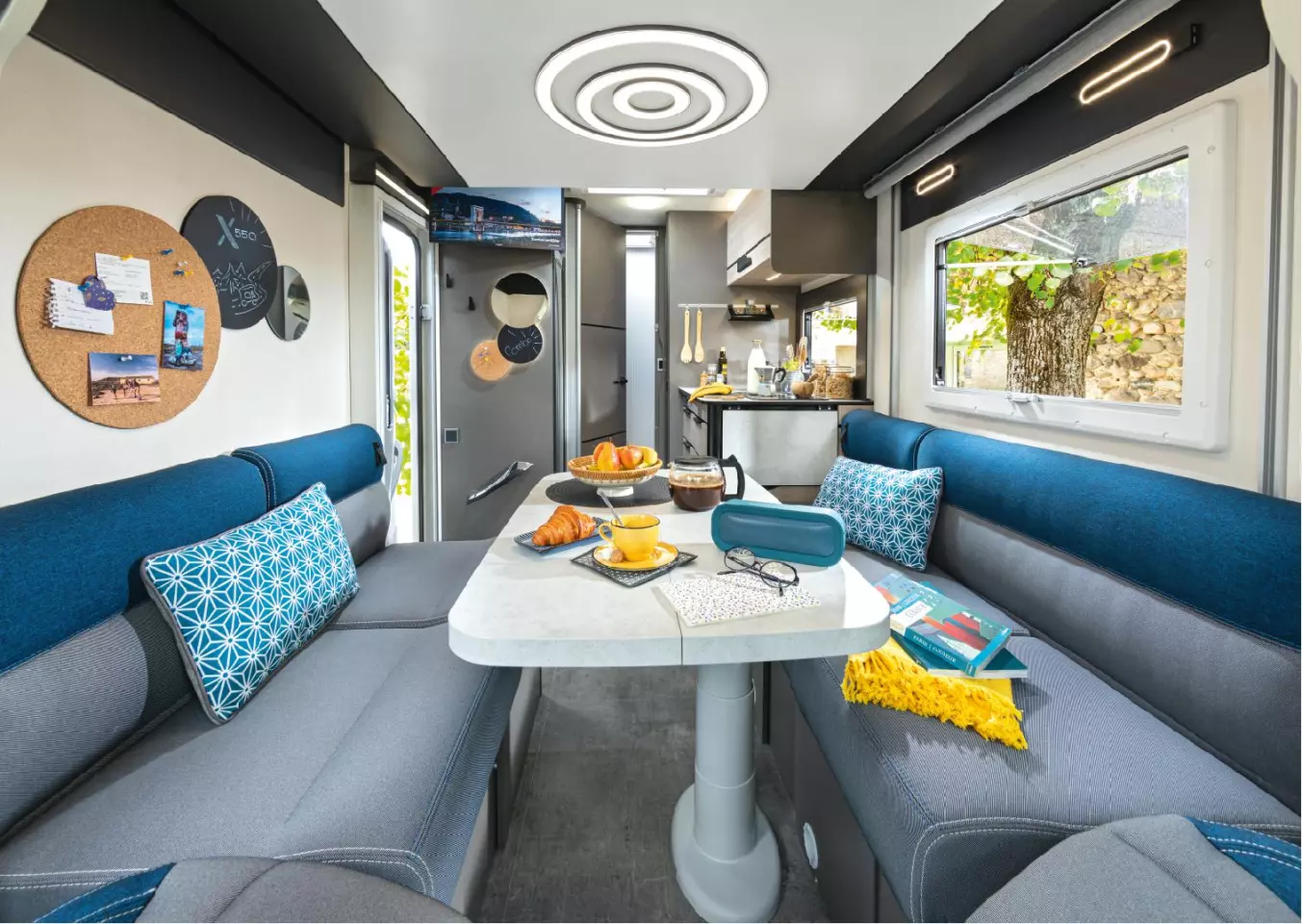British e-drive innovator Bedeo and French motorhome group Trigano have teamed up on the most unique hybrid motorhome in the world. It's called the ElectriX, and it's a Class B+ motorhome that offers over 700 km (435 miles) of driving range with the option of going fully electric at the push of a button. It's the world's first hybridized RV with in-wheel motors and also boasts a smart, sleek design that blurs the line between camper van and motorhome.
For years, Bedeo has been working closely with fleet managers and automakers toward refitting traditional ICE-driven light commercial vehicles as both all-electrics and extended-range hybrids. For the latter, it uses what it simply calls the Range Extender (RE) system, a pair of hub motors and a battery pack that electrify the rear wheels without requiring any changes to the base ICE powertrain up front. Drivers can call upon all-electric RWD power at the push of a button without losing the range and fast refueling of the stock FWD engine.
Bedeo has been particularly focused on converting Stellantis full-size vans from brands like Fiat, Peugeot and Citroën. The idea is that the vans maintain their ICE driving range for long distances but can switch over to pure-electric driving to meet EU zero/low-emissions zone regulations and/or boost overall fuel economy. A delivery van, for instance, could cover the long highway miles of the delivery via diesel, then switch over to electric for the last city miles.

Moving beyond commercial vehicles, Bedeo company Protean Electric last year helped China's Dongfeng create what the duo called the world's first homologated passenger car with in-wheel electric motors, the Fengshen BEV E70. And now Bedeo has created the world's first hybrid RV with in-wheel motors.
In fact, Bedeo has made a small motorhome series, working with the X series of compact Class B+ motorhomes from Trigano brands Challenger and Chausson. It puts 115-kW electric hub motors into the rear wheels and mounts a 37-kWh battery pack below the van floor so as not to reduce living or storage space. This combo powers the plus-sized camper van for up to 100 km (62 miles) of estimated zero-emissions range.

Instead of using an engine-generator like the one with which Thor Industries is experimenting, Bedeo simply leaves the existing front engine of the Fiat Ducato base chassis as is. So when the battery goes dead, or the driver decides to conserve electrical power, they can simply switch back over to the 140-hp 2.2-liter MultiJet engine, enjoying between 700 and 900 km (435 and 559 miles) of total estimated electric-diesel driving range. The battery charges via both regenerative braking and external charging.
With the two independent powertrains, ElectriX drivers can roll quietly and cleanly through sensitive locations like city centers, wilderness areas and campgrounds without giving up the proper road trip range of the Ducato diesel engine. We've long thought a hybrid powertrain the best solution for more eco-friendly camping vehicles, and we like how Bedeo is able to simply retrofit already-popular RV models and base chassis into hybridized campers.
"Our partnership with Trigano Group marks a significant step in transforming the camper van market toward a more sustainable future," said Osman Boyner, Bedeo's founder and CEO. "Bedeo's electrification technology empowers adventurers to explore nature responsibly, offering the perfect balance between eco-conscious travel and long-range performance."

We first looked at the 599-cm-long (236-in) Challenger X150 (and identically configured Chausson X550) when it launched in 2021 as the Combo X150. A new category for Challenger at the time, the X150 splits the difference between the brand's traditional Class B camper van and Class C motorhome lineups, featuring a polyester-skinned composite motorhome module mounted to the bare back of a Ducato chassis. The motorhome is slimmer and more integrated than a full-blown Class C alcove-style unit, maintaining a look and size similar to a camper van.
Challenger's X150 strategy increases interior space for a roomier small-motorhome-like feel while maintaining the more compact footprint and driving manners of a van. The segment-splitting design isn't entirely unique to Challenger or Trigano, but it remains fairly rare in comparison to traditional camper vans and larger-bodied motorhomes.

Challenger takes advantage of the X150's broader, boxier cabin to house a dual-bench dining area that's much roomier than the typical camper van front dinette. This dining lounge then converts over into a proper double bed measuring 190 x 140 cm (75 x 55 in). This convertible bed joins the lift-away double bed of the same dimensions to sleep a total of four people. The floor plan includes a full-width rear bathroom that appears to add a little extra space and comfort over the small, claustrophobic bathroom compartments many camper vans have wedged between furnishings.
In addition to the Challenger X150, the aforementioned Chausson X550 sister model will be available with the Bedeo RE dual-mode system, as will the larger 636-cm (250-in) Challenger X250 and Chausson X650. Bedeo debuted the ElectriX series at the Paris Leisure Vehicle Show last week.

According to European RV industry publication Aboutcamp BtoB, the ElectriX RVs are available now for a base price of €99,990 (approx. US$110,275). That's a quick climb from the €74,990 (US$81,600) MSRP for which the standard Challenger X150 lists when equipped solely with Fiat's 2.2-liter Multijet engine, but the ElectriX models are certainly an intriguing means of cutting one's carbon footprint while touring the great outdoors. Trigano Group has more than two dozen RV brands, so that bodes well for additional models in the future.
Source: Bedeo












